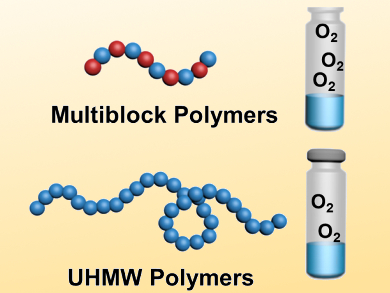Reversible deactivation radical polymerization (RDRP) is widely used to make polymers with precisely controlled structures. However, the industrial scale-up of RDRP – and particularly the synthesis of multiblock and ultra-high-molecular-weight (UHMW) polymers – is prevented by oxygen sensitivity.
Zesheng An and colleagues, Shanghai University, China, have developed a strategy for the synthesis of multiblock and ultrahigh-molecular-weight polymers without the previous removal of oxygen. Inspired by a tandem enzymatic process in root fungi, the green and sustainable process uses enzyme cascade catalysis to generate precision polymers under mild conditions (pH 7, 30 °C).
The team used pyranose oxidase (P2Ox) to convert oxygen to hydrogen peroxide, which is subsequently used by horseradish peroxidase (HRP) to produce acetylacetone radicals. These radicals initiate a controlled reversible addition-fragmentation chain-transfer (RAFT) polymerization.
Using this method, sequence-controlled multiblock copolymers and well-defined UHMW polymers (≤ 2.3·106 g mol–1) were synthesized. The large-scale production of complex and high-molecular-weight polymers could be made possible by this synthetic route.
- Enzymatic Cascade Catalysis for the Synthesis of Multiblock and Ultrahigh-Molecular-Weight Polymers with Oxygen Tolerance,
Zhifen Liu, Yue Lv, Zesheng An,
Angew. Chem. Int. Ed. 2017.
DOI: 10.1002/anie.201707993



